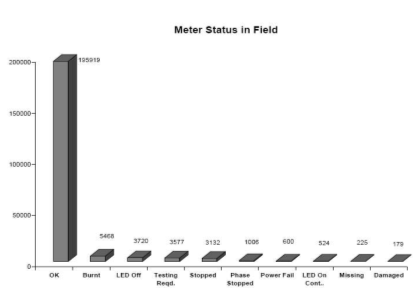A utility in India (located at a major industrial hub) was facing serious revenue protection issues in its metering system. It was finding it difficult to stop revenue loss because of tampered, faulty and burnt out meters. Consumer satisfaction was low because of inaccurate accounting, billing and connection security. Above all, they had to meet the Central Electricity Authority (CEA) regulations which require utilities to get their consumers’ meters tested once every five years.
The utility decided to have meters in four of its divisions tested. This contract was awarded to us. There were over 200,000 consumers out of which, over 100,000 had single phase and 37,000 three phase connections. Meter testing for both electronic and electro-mechanical meters was to be done.
To deliver quality services, we are equipped with quality tools, software and other accessories. Our teams for the project started testing meters using the industry standard product “Accucheck”. Meter data entered in Accuchecks was then processed using our software and reports were generated. The specialties of the service were:
- It was done under scientifically devised processes
- Portable test instruments were used to suit site conditions
- The processes were not dependent on utility power supply
- Less manual interventions
- Data directly uploaded to software from the testing equipment
- Detailed analysis of test results
- Actionable reports
There were poser supply issues and on average power supply was available for four hours to do meter testing. Even then we managed to complete the task in time.
49% of the single phase and 46% of the three phase meters were inaccurate.


